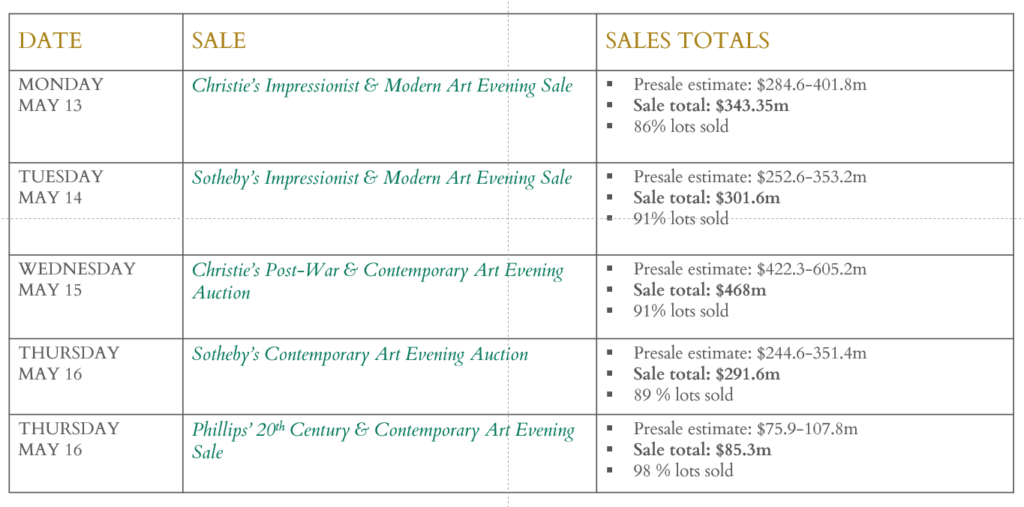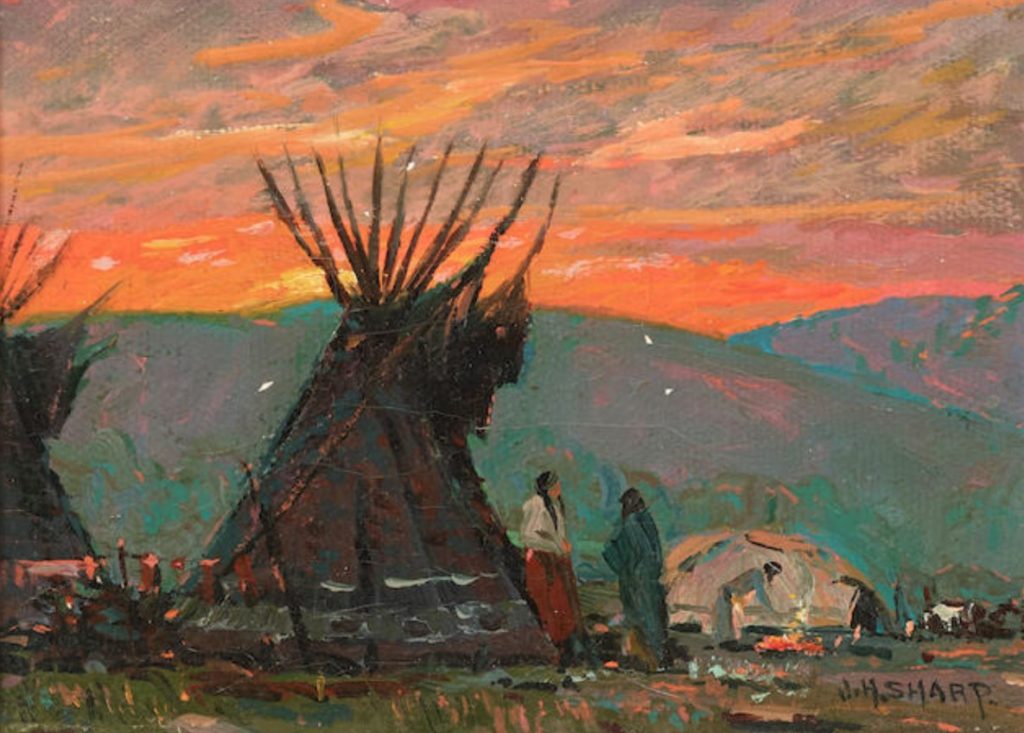We are delighted to announce that we assisted our clients with the sale of the below works at the British & European Art: Victorian, Pre-Raphaelite & British Impressionist Art on 11 July 2019 at Christie’s London.
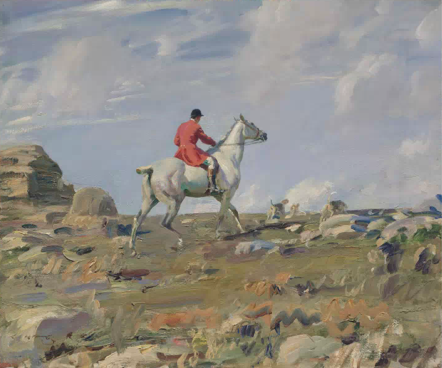
Sir Alfred James Munnings
Ned Osborne on ‘Grey Tick’, Zennor Hill, Cornwall
Oil on canvas
25 x 30 in.
Signed ‘A.J. MUNNINGS’ (lower left)
PROVENANCE
with G. Blair Laing, Toronto, 1958, where purchased by the grandfather of the present owners.
EXHIBITION HISTORY
London, Alpine Gallery, Pictures of the Belvoir Hunt and Other Scenes of English Country Life by Alfred J. Munnings, R.A., 1921, no. 40, as Zennor Hill, Cornwall.
LITERATURE
The Field, 21 April 1921, p. 625, as Zennor Hill, Cornwall.
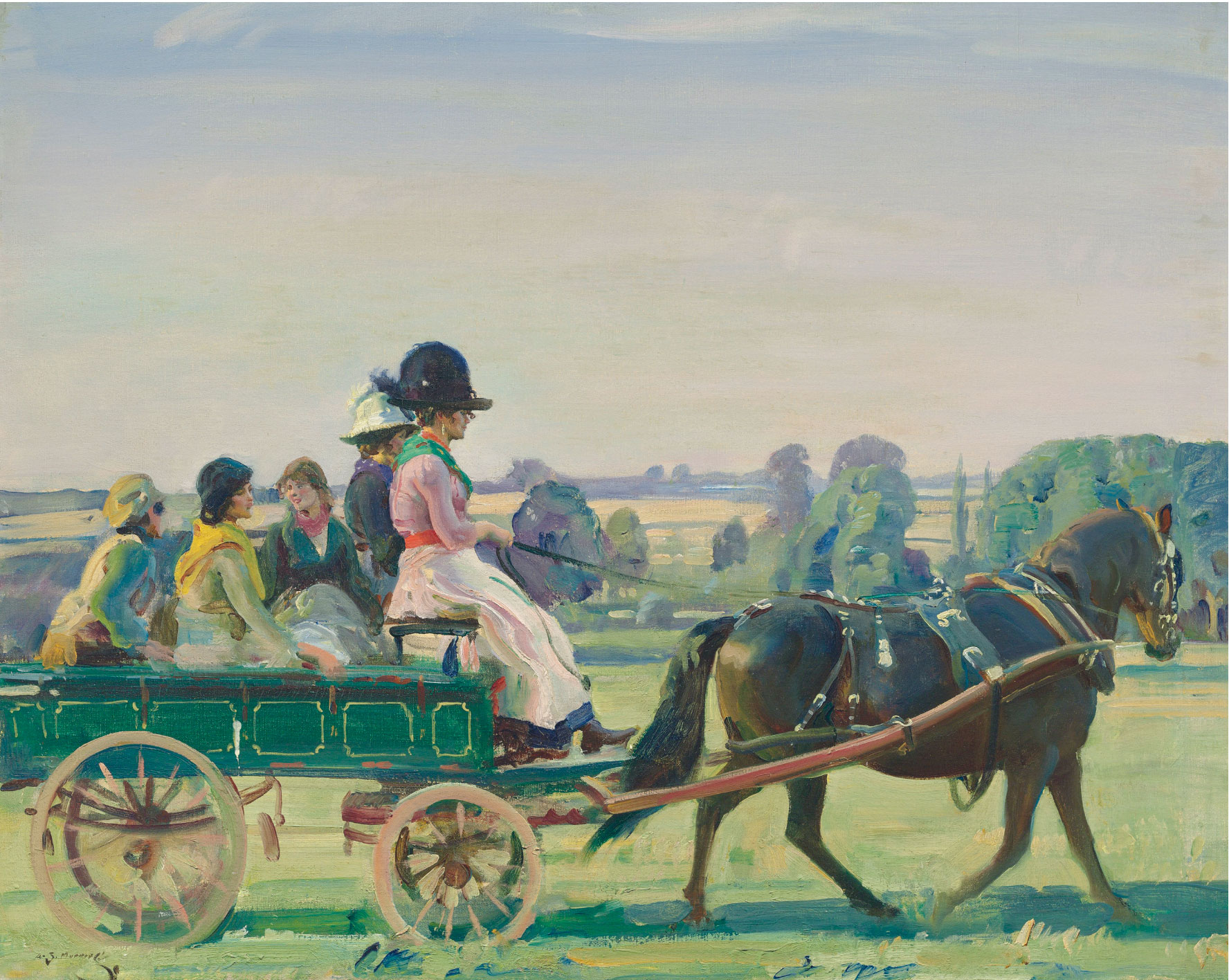
Sir Alfred James Munnings
The Green Waggon
Oil on canvas
25 x 31 in.
Signed ‘A.J. MUNNINGS’ (lower left) and further signed and inscribed
“The Green Waggon”/Alfred. J. Munnings,/Castle House,/Dedham E.’
(on a “War Service” economy label attached to the stretcher)
PROVENANCE
with G. Blair Laing, Toronto, 1958, where purchased by the present owner.
EXHIBITION HISTORY
London, Royal Academy, 1921, no. 554.
Liverpool, Walker Art Gallery, Autumn Exhibition, 1921, no. 937.
LITERATURE
Royal Academy Illustrated, London, 1921, p. 100, illustrated.
The Children’s Newspaper, 21 May 1921, p. 3.
Sir A.J. Munnings, The Second
OUR SERVICES
Offering expert Advisory across sectors, our dedicated Advisory and Sales Agency teams combine strategic insight with transparent advice to guide our clients seamlessly through the market. We always welcome the opportunity to discuss our strategies and services in depth.
The Maharajas & Mughal Magnificence sale
Brought to auction in partnership between Christie’s and The Fine Art Group, the Maharajas & Mughal Magnificence sale achieved the highest total ever for a single owner auction of Indian art and jewelled objects setting three records for Indian works of art. With almost four hundred lots spanning over five hundred years, Maharajas & Mughal Magnificence presented an unprecedented group of jewels, gemstones, and decorative objects that explored the creative dialogue between the Indian subcontinent and Europe.
PIECES FOR SALE
The sale, held on June 14th, 2019 at Christie’s New York achieved:
- $109,271,875
- 92% sold by value
- 93% sold by lot

One of two diamonds presented to Queen Charlotte, wife of King George III by Muhammad Ali Wallajah, Nawab of Arcot. © The Al Thani Collection 2013. All rights reserved. Photographs taken by Prudence Cuming
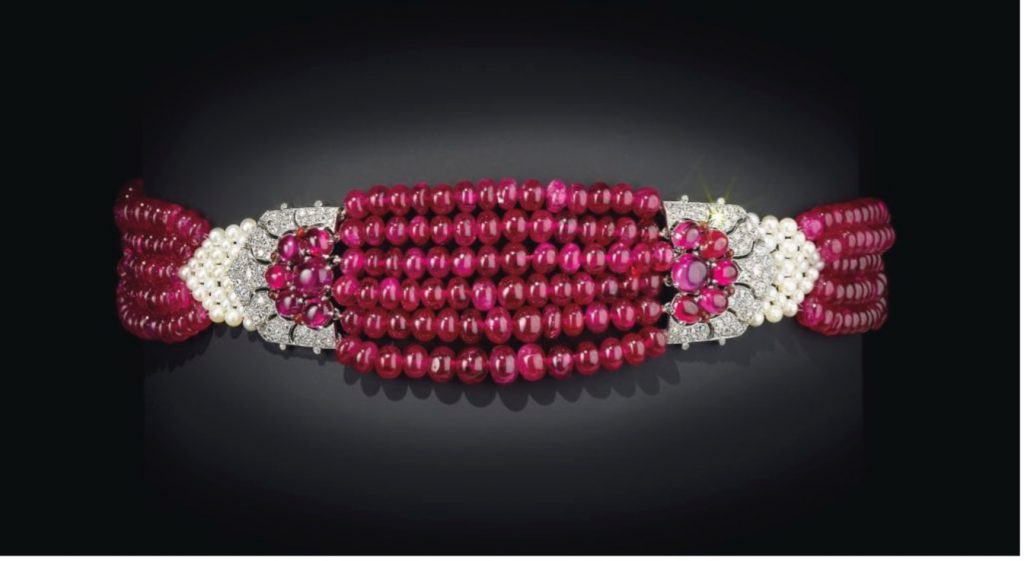
From the collection of Maharaja Bhupinder Singh of Patiala. © The Al Thani Collection 2013. All rights reserved. Photographs taken by Prudence Cuming
The response to this extraordinary sale was unprecedented. Over 50,000 people attended the global exhibition tour to Shanghai, Geneva, Hong Kong, and London, finally culminating in New York for a marathon 12.5-hour auction. The auction attracted international collectors and institutions from 45 countries across five continents.
OUR TEAMWORK
As part of our Advisory service, The Fine Art Group managed the sales strategy on behalf of the seller; from negotiating terms with the auction house and driving the marketing strategy to publicizing the collection to our own private network of collectors. Philip Hoffman, Founder and CEO, The Fine Art Group, remarks: “I am honoured that The Fine Art Group were able to play a part in this record-breaking sale of Indian and Mughal Jewellery, art and objects. The success of Maharajas and Mughal Magnificence is testament to the hard work of the Christie’s team, led by François Curiel, Rahul Kadakia and William Robinson.”
Highlights included a number of pieces by Cartier such as a Belle Époque Devant-de-corsage, by Cartier, Paris, 1912, which sold for $10,603,500 to an in-room bidder; a pair of emerald, natural pearl, ruby and diamond clips by Cartier achieved $1,695,000; and the ‘Taj Mahal Emerald’ brooch by Cartier which sold for $1,815,000.
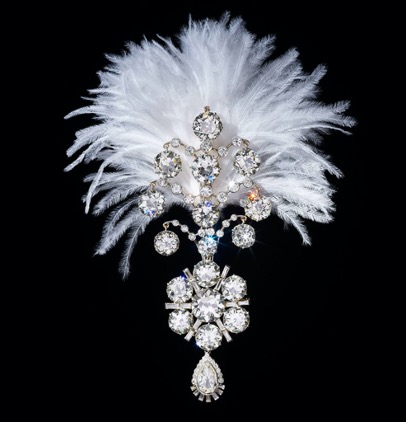
In addition, the exceptional Golconda Diamond Rivière Necklace, from the collection of the Nizams of Hyderabad, sold for $2,415,000; the Shah Jahan Dagger achieved $3,375,000; and the Mirror of Paradise realised $6,517,500.
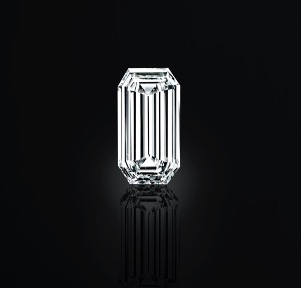
These objects were offered from The Al Thani Collection. From 2021, works of art from this encyclopaedic collection will be shown at a new museum space in Paris. In addition to new acquisitions, sale proceeds will support ongoing initiatives of The Al Thani Collection Foundation which extend from exhibitions, publications and lectures to sponsorship of projects at museums around the world.
OUR SERVICES
Offering expert Advisory across sectors, our dedicated Advisory and Sales Agency teams combine strategic insight with transparent advice to guide our clients seamlessly through the market. We always welcome the opportunity to discuss our strategies and services in depth.
We asked our Jewelry Advisor Raymond Sancroft-Baker to give us his top tips on buying and collecting jewelry.
FIRST QUESTION
When you are thinking of buying a piece of jewelry or a gemstone you must ask yourself two questions, ‘Do I like it’ and ‘Can I afford it’, if the answer is yes to both, go ahead and make the purchase.
BUY QUALITY
I would then look for the best quality jewel I could afford. So often people have bought lots of minor pieces ‘because they were cheap’. There will always be inferior items for sale but jewelry of real quality is rare and always will be. Remember the best gets better. Of course, price is always a consideration but it is preferable to purchase four or five good jewels rather than ten ordinary pieces.
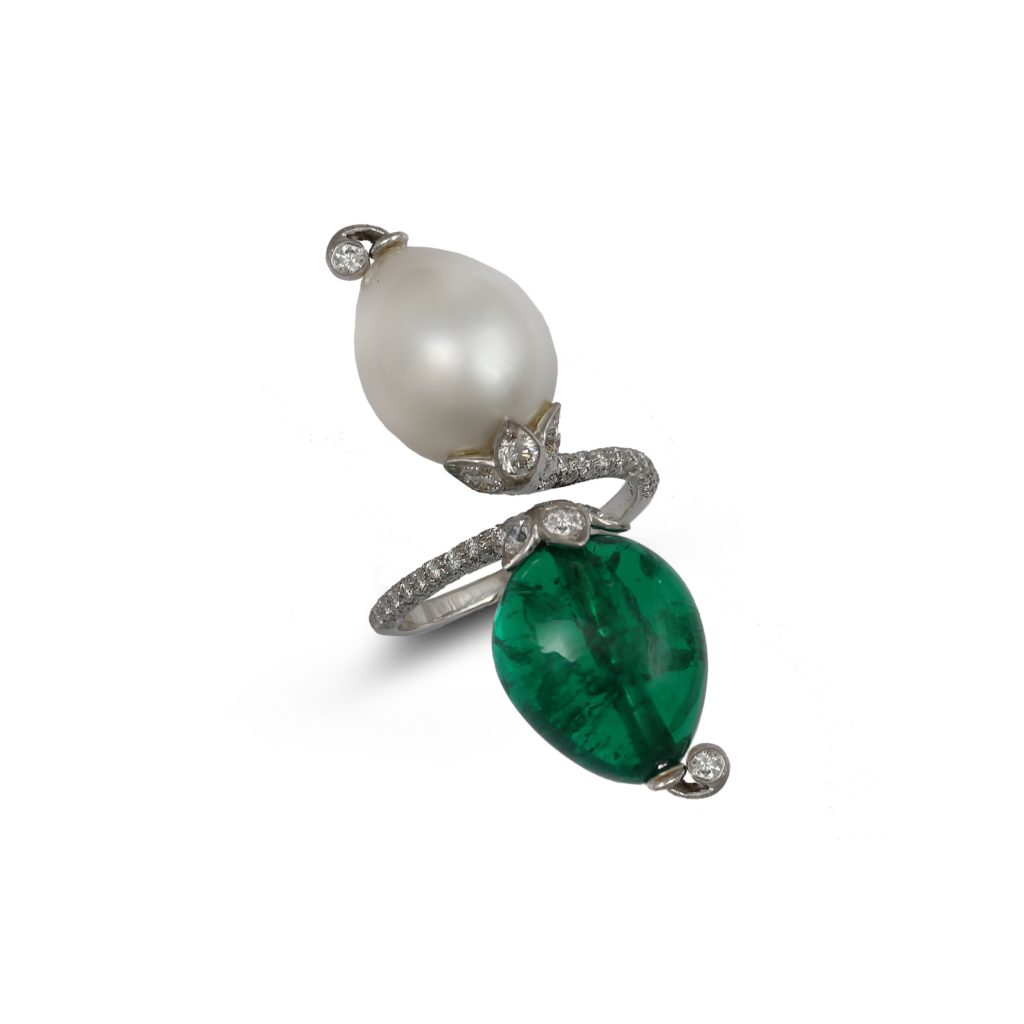
WHERE TO BUY: RETAIL
Walking down Bond Street there are numerous retail jewellery shops to visit. Graff will show you the finest diamonds and gemstones available. Cartier, Van Cleef & Arpels, Boucheron and Tiffany will be able to offer you a broad range of contemporary jewellery as well as a small selection of their vintage pieces. You will see a very wide range of jewels from the low thousands to the high millions. There will be an extensive choice and the benefit of immediate purchase, but you will be paying retail prices as having a shop on Bond Street is very expensive.
WHERE TO BUY: AUCTION
Alternatively, if you go to an auction house to buy your jewellery you will have limited choice. Sometimes there is a good selection from a deceased estate (the family will retain the most wearable!), or someone is elderly and has no occasion to wear their jewellery. Christie’s, Sotheby’s and Bonhams all have auctions and offer a wide selection of gems and jewellery from different periods to choose from. The prices will be lower than retail but make sure you understand exactly what you are buying and look at the condition report as well as asking the specialist their opinion.

INVESTMENT
There is always an implication in the word ‘investment’ that values will rise, I prefer to call jewelry a ’store of value’ and over time good pieces bought at the right price will keep pace with inflation. If you buy retail you will have to wait many years to get your money back and at auction there are fees when buying and selling so it is important to like and hopefully wear, the jewelry you purchase.
VINTAGE JEWELRY
If you like a particular style, be it Belle Epoque or Art Deco make sure that the piece in question is actually from the period. There are a number of clever imitations on the market that can easily fool the layman. So make sure the vendor states in writing that the piece they are selling is Belle Epoque circa 1905 or Art Deco circa 1930. Jewelry from these eras will always display some natural wear and have a soft feeling as opposed to new pieces that will be rather sharp in the hand.
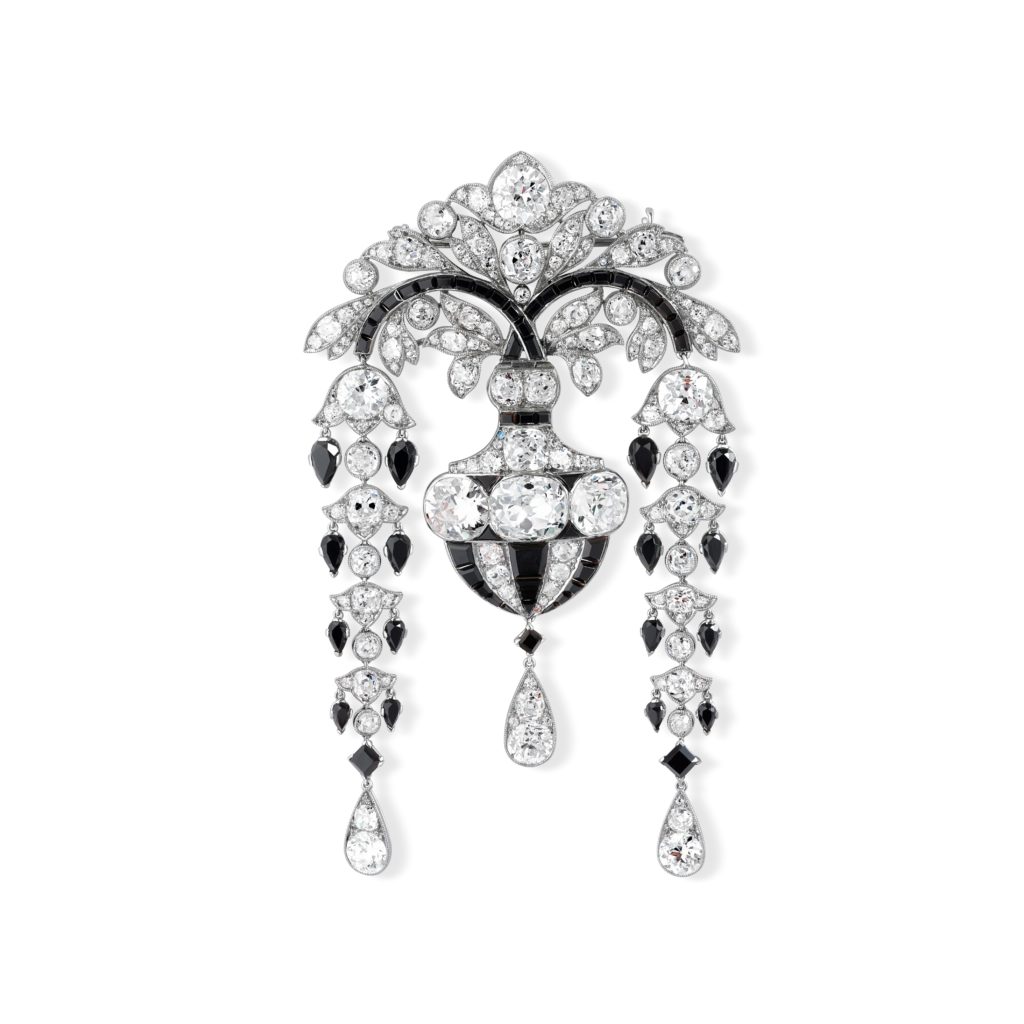
CONDITION REPORT
It is always advisable to request a condition report whether you are buying from a dealer or an auction house. This should give you a complete picture of the gemstone or jewel as it is important to know exactly what has happened to the item. Small changes like ring sizing or minor repairs are normal but major alterations could make re-selling difficult.
CERTIFICATES
Nowadays, more than ever, it is essential to obtain a gemmological report if you are buying an expensive gemstone or piece of jewelry. Pearls are notoriously difficult to judge if they are natural or cultured so it is imperative to have proof that they are natural from a recognized laboratory. Rubies, sapphires, emeralds and pearls should have a report, ideally from the SSEF (Swiss Gemmological Institute) in Basel or Gubelin in Lucerne. The same principle applies to diamonds and the foremost laboratory is the GIA (Gemological Institute of America).
SIGNED JEWELRY
It is certainly preferable to buy a signed piece of jewelry as it inspires confidence that it has been made to a certain standard and that the stones used in its manufacture are superior to a similar but unsigned piece. Some will be numbered as well as signed which means that it could be traced back to it’s place and year of manufacture. A jewel by Cartier from the 1930s is certainly worth double an unsigned piece and this can be justified by knowing one is buying good design, excellent color combination and of quality manufacture.
COMPARISONS
Finally shop around, there will be many people wanting to sell to you and there are lots of places to visit. Grays Market at 58 Davies Street has numerous jewelers as does Burlington Arcade apart from the well-known brands along Bond Street. And one final piece of advice, don’t be tempted to buy treated stones or synthetic diamonds – however cheap they might seem.
Let Our Advisors Assist You this Father’s Day
Let The Fine Art Group assist you with finding the perfect gift for Father’s Day. Our Art Advisory team reviews art fairs and all major auction and dealer catalogues. We are positioned to be able to source the rare and unique, whether it be jewelry, fine art, wine, rare books or other decorative arts.
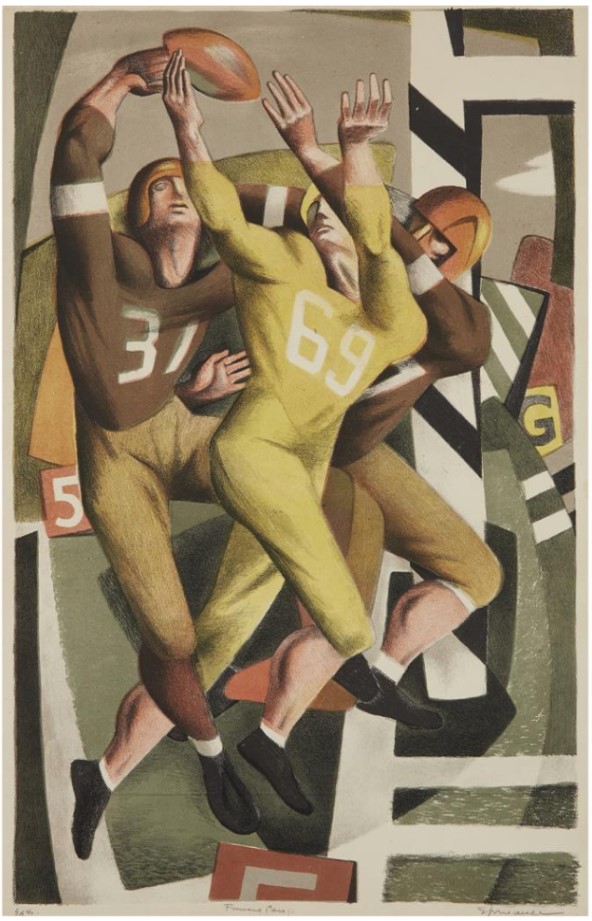
American Art & Pennsylvania Impressionists
June 9, 2019
Benton Murdoch Spruance (1904–1967)
Forward Pass
1944
Edition of 40.
Pencil signed ‘Spruance’ bottom right; also titled bottom center and inscribed ‘Ed. 40’ bottom left
Color lithograph (with five colors) on paper
Image size: 20 1/16 x 12 1/2 in.
Sheet size: 23 x 15 5/8 in.
Printed by Cuno.
[Fine/Looney 231]
Estimate $3,000-5,000
PROVENANCE
Private Collection, Philadelphia, Pennsylvania.

Exclusive Watches Sale
June 6, 2019
Rolex
GMT-Master Ref. 1675 in Steel
1967
Ref: 1675
Case Number: 1830596
Case Material: Stainless steel
Case Dimensions: 40 mm in diameter
Dial: Black with luminous hour markers, date aperture at the “3” hour marker
Bracelet Material: Rolex signed ref. 78360 in stainless steel
Bracelet Size: 6 3/4 in.
Movement: Automatic
Functions: Time, date, GMT
Caliber: 1575
Estimate: $5,000
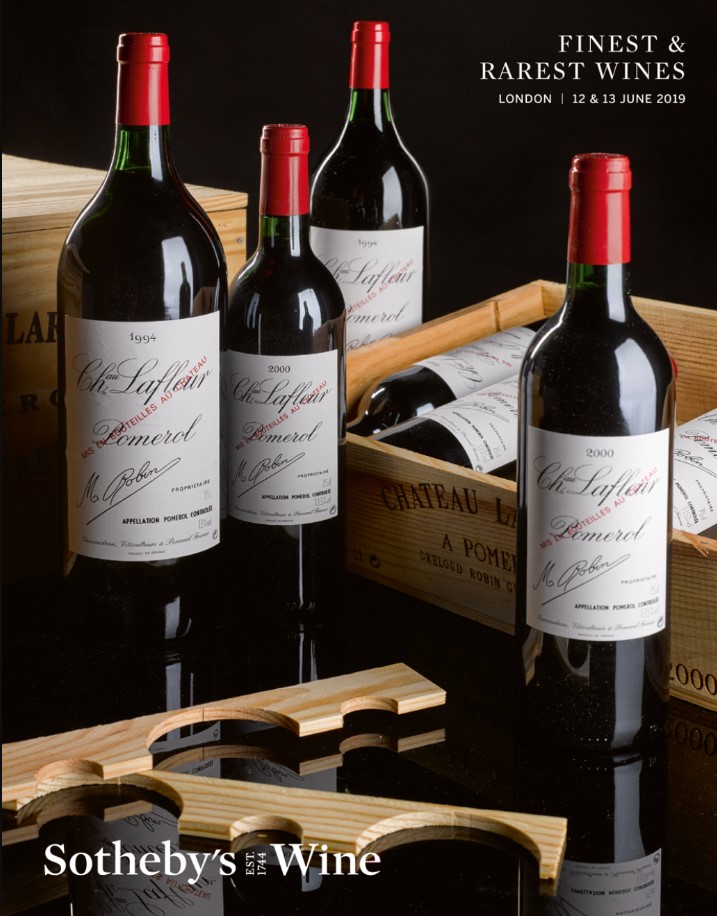
Finest & Rarest Wines Sale
Petrus 1992, Pomerol
Excellent levels and appearance, WA 90, 8:5 bts (owc)
Estimate Per Lot: $6,500-$8,000

Fine Books and Manuscripts
June 13, 2019
John Fitzgerald Kennedy (1917-1963)
Profiles in Courage
New York: Harper & Brothers, 1961.
Estimate: $2,000-$3,000

The David Gilmour Guitar Collection
Lot 6
Gibson Guitars
GIBSON INCORPORATED, KALAMAZOO,
1973
A Solid-Body Electric Guitar, Les Paul
Estimate: $2,500-$3,500
NOTE
Orville Gibson, who in 1894 worked as a part-time shoe salesman and restaurant clerk in Kalamazoo, Michigan, possessed a dual passion for music and woodworking. Although Gibson lacked any formal training as a luthier, it was his creative thinking, at the nexus of these two passions, which convinced him that he had the means to greatly improve guitar construction.
OUR SERVICES
Offering expert Advisory across sectors, our dedicated Advisory and Sales Agency teams combine strategic insight with transparent advice to guide our clients seamlessly through the market. We always welcome the opportunity to discuss our strategies and services in depth.
COLLABORATION WITH INTERIOR DESIGNER PATRICK SUTTON
Our art advisory team is honored to work with Patrick Sutton. Patrick is an international acclaimed interior designer and story teller whose interiors convey a sense of refined luxury.
“Baltimore-based interior designer Patrick Sutton grew up touring the world with his travel journalist father and fashion model mother. The golden light of Rome, the colorful spices of Marrakesh, the polished marble floors of a Paris hotel: the young voyager developed a vivid visual library of the world’s beautiful spaces. Following his love of design to a career in architecture and interiors, Sutton today draws upon this store of memories to craft unique designs intimately related to his clients and their dreams.”
The Fine Art Group congratulates Patrick on the publication of his first book Storied Interiors which focuses on high end residential interiors as well as public spaces such as the Sagamore Pendry Hotel in Baltimore, MD which was recently rated as the Number One Hotel in North America by Condé Nast.
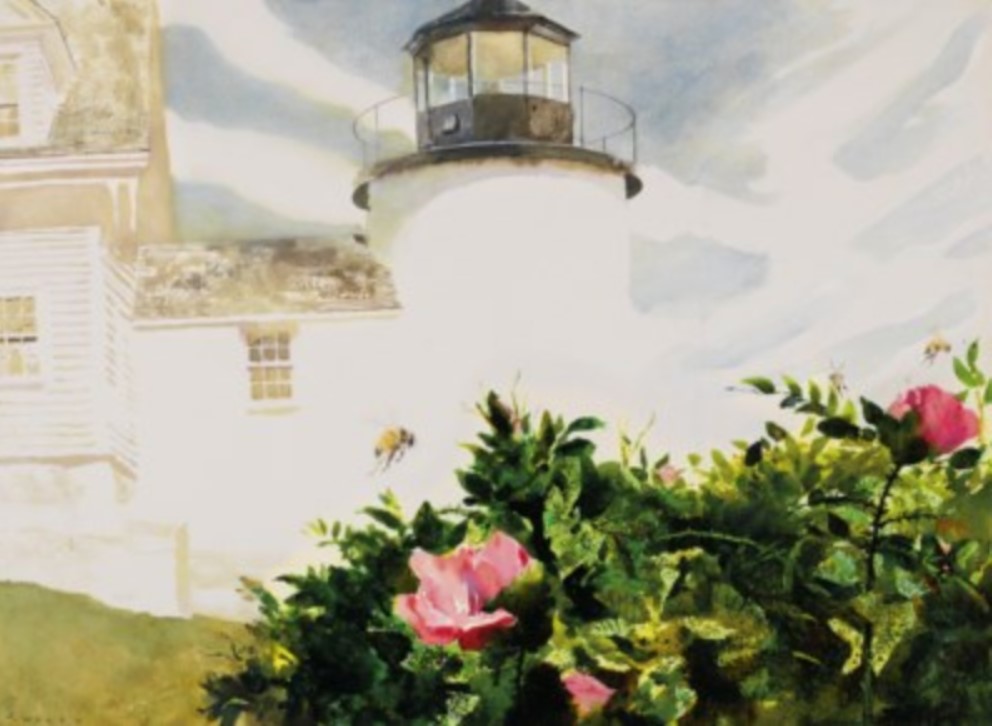
Christie’s
Sale 17034
Lot 54
Jamie Wyeth
Rosa Rugosa
Watercolor and pencil on paper
20 ½ x 28 in.
Sold: $137,500 (with Buyer’s Premium)
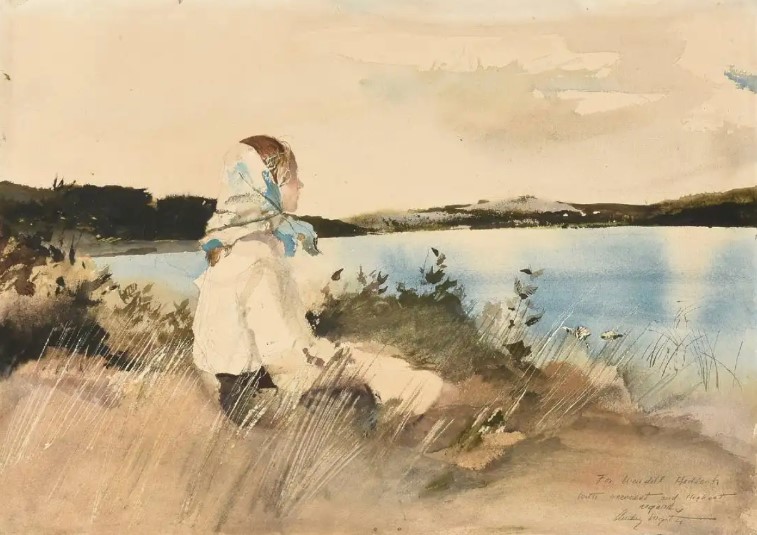
Andrew Newell Wyeth
Jean Hadlock
Watercolor on paper
15 x 21 in.
Sold: $170,000
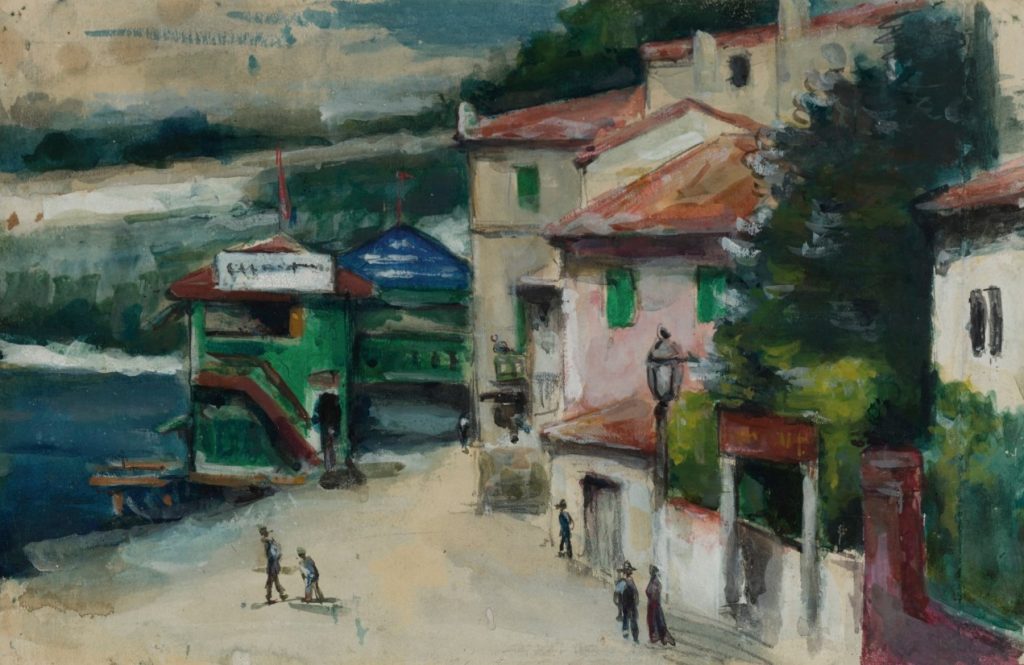
Sotheby’s
Impressionist & Modern Art Day Sale
Paul Cézanne
Le Restaural Mistal à L’Estaque
Gouache, watercolor and pencil on paper
9 x 14 in.
Sold: $225,000 (with Buyer’s Premium)
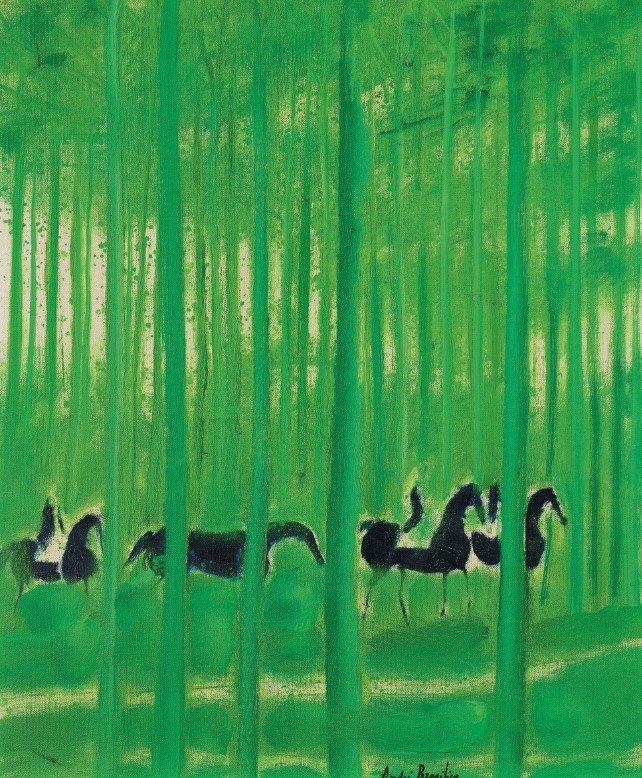
Christie’s
Sale 17156
Lot 486
André Brasilier
Vert printemps
Oil on canvas
21 ¾ x 18 1/8 in.
Sold: $50,000
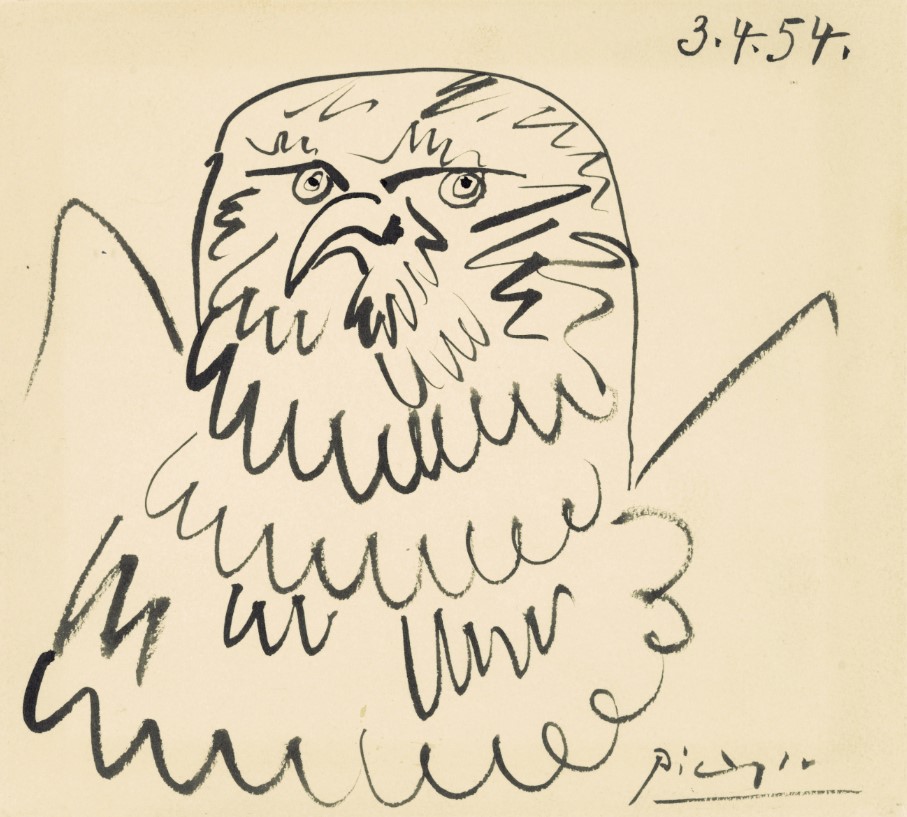
Christie’s
Sale 17155
Lot 197
Pablo Picasso
Chouette
India ink on paper
7 x 8 in.
Sold: $68,750 (with Buyer’s Premium)
Bonhams
Lot 141
Joseph Henry Sharp
Indian Encampment at Sunset
Oil on canvas laid down on board
5 x 7 in.
Sold: $10,075 (with Buyer’s Premium)
Christie’s, Sale 17163
Andy Warhol, Sunset Series

Andy Warhol
Sunset
Unique screenprint in colors
34 x 34 in.
Sold: $87,500 (with Buyer’s Premium)
Andy Warhol
Sunset
Unique screenprint in colors
34 x 34 in.
Sold: $93,750 (with Buyer’s Premium)

Andy Warhol
Sunset
Unique screenprint in colors
34 x 34 in.
Sold: $75,000 (with Buyer’s Premium)
Andy Warhol
Sunset
Unique screenprint in colors
34 x 34 in.
Sold: $68,750 (with Buyer’s Premium)
OUR SERVICES
Offering expert Advisory across sectors, our dedicated Advisory and Sales Agency teams combine strategic insight with transparent advice to guide our clients seamlessly through the market. We always welcome the opportunity to discuss our strategies and services in depth.
Luogo E Segni
Punta Della Dogana: 24 March – 15 December 2019

The exhibition takes its title from a painting by Carol Rama included in the exhibition. The show brings together over one hundred works, by thirty artists, that establish a particular relationship with their urban, social, political, historical, intellectual setting. Highlights include a signature beaded curtain installation by Felix Gonzalez-Torres, and an array of Roni Horn’s iconic frosted blue glass lozenges.
PITTURA/PANORAMA: Paintings by Helen Frankenthaler, 1952–1992
Museo di Palazzo Grimani, Venice: 7 May – 17 November 2019
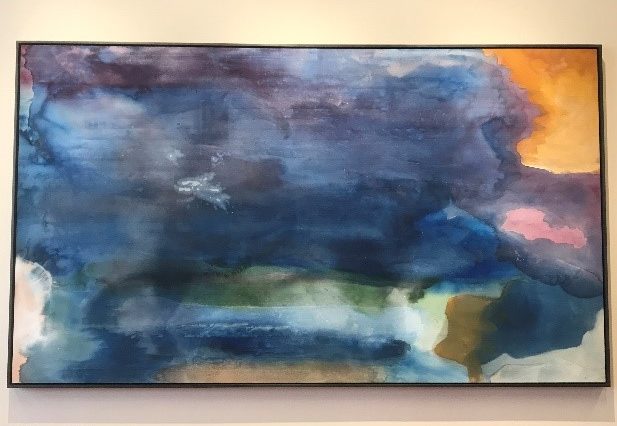
Abstract Expressonist Helen Frankenthaler’s famed colour-stained canvases have not been shown in Venice since 1966, when they held pride of place at the U.S. Pavilion of the Venice Biennale. The current exhibition at Palazzo Grimani, an art institution that dates back to the 16th century, is particularly fitting given the inspiration Frankenthaler gleaned from Venetian artists of that same era. The exhibition, curated by John Elderfield, includes work from four stages of the artist’s career, organized to illustrate the evolution of her career. The show focusses on the relationship in the artist’s development of the pittura (painting) and the panorama: the interplay of works like easel painting, although made on the floor, and large, horizontal paintings that open onto shallow but expansive spaces.
Sean Scully: HUMAN
Church of San Giorgio Maggiore: 8 May – 13 October 2019

HUMAN is a solo exhibition of recent and new works by Sean Scully, presented in collaboration with the Abbazia di San Giorgio Maggiore. Curated by Javier Molins, the exhibition invites viewers to contemplate the link between the contemporary artist and the historic church. Scully presents his largest sculpture to date beneath the church’s central dome. Constructed from stacked frames, each wrapped in vibrant and varying colours of felt, the sculpture rises ten metres into the air like an elaborate Jacob’s ladder, leading the eye and spirit heavenwards through the Basilica’s dome. In the remaining spaces, the artist’s acclaimed Landline series are displayed alongside three new figurative portraits from a series entitled Madonna.
Baselitz – Academy
Gallerie dell’Accademia di Venezia: 8 May – 8 September 2019

Baselitz is the first living artist to have an exhibition at the Galleria dell’Accademia. The German artist is showing his feverish paintings and drawings, as well as deftly hewn figurative sculptures, ranging from across his more than 60-year career and including new work created specifically for the show. Baselitz’s oeuvre has always been about destabilising the image, most notoriously by turning it upside down. The Accademia exhibition aims to deepen our understanding of a familiar artist, Baselitz emerges nuanced, playful, wide-ranging. The show celebrates the infinite possibilities by which tradition, including that of Raphael & Giorgione, becomes inspiration for the acclaimed artist.
Edmund De Waal: Psalm
Canton Scuola Synagogue / Ateneo Veneto: 7 May – 29 September 2019

dmund De Waal’s Biennale collateral exhibition is in two parts. Collectively entitled psalm, they take place at the Canton Scuola, a 16th-century synagogue in the Ghetto Nuovo, and at the nearby Ateneo Veneto. The former is based around literature and the latter featuring his trademark porcelain vessels. One of five synagogues in the Venetian Ghetto, the Canton Scuola is part of the Jewish Museum and for the first time is allowing art in its Women’s Gallery. Twelve of de Waal’s vitrines holding white porcelain, marble and gold line its walls.
At Ateneo Veneto the installation consists of a library housing 2,000 books by exiled writers. Visitors are encouraged to read and write in the books, most of which are in translation. De Waal has inscribed the names of lost libraries on the exterior of the specially built structure, which will be presented in Dresden from November to February 2020, followed by the British Museum.
Jannis Kounellis
Fondazione Prada: 11 May – 24 November 2019

The first major survey of Jannis Kounellis since his death in 2017 is on view at the Fondazione Prada at Ca’ Corner della Regina in Venice. Kounellis was one of the leading figures of Arte Povera, the term coined in 1967 by the curator Germano Celant to describe a group of young Italian artists who rejected traditional processes and materials. Celant organised the exhibition bringing together 70 works dating from 1958 to 2016, across the three floors of the 18th century palazzo.
GHANAIAN PAVILION
GHANA FREEDOM: El Anatsui, Ibrahim Mahama, Felicia Abbas, Lynette Yiadom-Boakye, John Akomfrah, Selasi Awusi Sosu
VENUE: Arsenale
Ghana’s first national pavilion is one of the most celebrated in the whole Biennale. The pavilion is designed by David Adjaye as a labyrinth of cellular spaces built in ochre Ghanaian soil, still smelling of the earth, in which dialogues between different generations, media, diaspora and Ghana-based artists coalesce. The title of the pavilion is a reference to the song composed by E.T. Mensa on the eve of the country’s independence in 1957; Ghana became the first sub-Saharan country to free itself from colonial rule.

Curated by Nan Oforiatta Ayim the space includes largescale installations by El Anatsui and Ibrahim Mahama; portraits by Ghana’s first known female photographer Felicia Abbas stand opposite the painter Lynette Yiadom-Boakye; the heavyweight filmmaker John Akomfrah shows a newly commissioned three-channel film installation; and a film-sculpture from Selasi Awusi Sosu.
INDIAN PAVILION
Our Time for a Future Caring: Nandalal Bose, MF Husain, Atul Dodiya, Jitish Kallat, Ashim Purkayastha, Shakuntala Kulkarni, Rummana Hussain and GR Iranna
VENUE: Arsenale
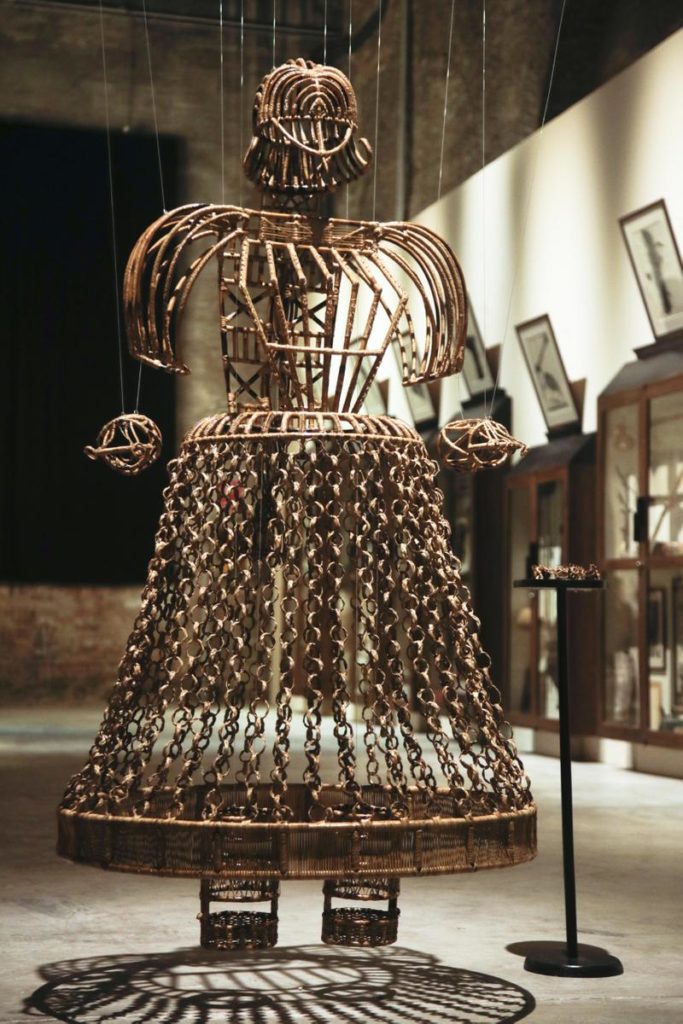

Returning after an eight year hiatus, India’s compelling group presentation addresses Gandhi’s legacy, beginning with Nandalal Bose’s posters for the 1938 Haripura Congress. In Broken Branches (2002), Atul Dodiya has recreated the old wooden cabinets found in the Gandhi museum in Porbandar, filling them with prosthetics, books, tools and weaving in personal items, while GR Iranna has covered one of the walls with hundreds of wooden padukas for his work Naavu (We Together) (2012), which refers to Gandhi’s choice of wood slippers—he rejected leather—and the power of collective marching. Jitish Kallat’s Covering Letter, projecting a plea for peace sent by Gandhi to Hitler on a curtain of descending mist through which audiences walk, simultaneously inhabiting and dissipating the text, is another key highlight. The pavilion theme marks the 150th anniversary of the birth of the Indian independence leader.
LITHUANIAN PAVILION
Sun & Sea (Marina): Rugilė Barzdž iukaitė, Vaiva Grainytė and Lina Lapelytė
Venue: Marina Militare, Calle de la Celestia, Castello
From 10am to 6pm every Saturday until the end of October, the Lithuanian pavilion is offering the spectacle of a beach of holidaymakers singing an “opera-performance” in a building that still belongs to the Arsenale’s military zone. The project is the work of theater director Rugilė Barzdžiukaitė, playwright Vaiva Grainytė, and composer Lina Lapelytė. It first debuted at Vilnius’s National Gallery of Arts in 2017 in Lithuanian and was adapted into English for the biennale, the pavilion is the 2019 recipient of the Golden Lion for Best National Participation.

Audience members become voyeurs, gazing down from balconies at the sandy stage set, where performers dressed in bathing suits and surrounded by seaside paraphernalia (lunch boxes, Sudoku, colouring books), casually sprawl on their towels and sun loungers. Their stream-of-consciousness libretto, alternating between solo songs and group choruses, is poetic, strange and often comic. But this microcosm of humanity comes with a barbed ecological message for the age of climate emergency.
PORTUGUESE PAVILLION
Leonor Antunes: a seam, a surface, a hinge or a knot
Venue: Palazzo Giustinian Lolin, San Marco, 2893

Leonor Antunes’ work in Palazzo Giustinian addresses the language and histories of Venetian Modernism. The artist begins with a black cork floor on the androne, the lowest level of the Grand Canal palazzo, dotted with brass squares. It is inspired by a Carlo Scarpa mosaic and lit by dramatically shaped lights designed by Egle Trinacanato, the first woman to graduate from Venice’s architecture school. Upstairs are partitions reaching up to the ceilings, echoing the rhythms of their wooden beams. Punctuating the space are tubular structures supporting tangled leather cords and woven screens and cooly minimal lights made in Murano glass. The evocation of history and sensitive response to the surrounding language of the palazzo and its furniture, makes for a poetic and evocative presentation of sculptures.
US PAVILION
Liberty/Libertà, Martin Puryear
Venue: Giardini

Martin Puryear’s pavilion entitled Liberty consists of eight sculptures that aim to present liberty as a universal, rather than an American, right. A significant work which presents a white column speared by a shackled iron stake is dedicated to Sally Hemings, Thomas Jefferson’s African-American slave and “concubine” who worked on his Virginia plantation. Other sculptures include a pair of wagons on a tilted plinth, evoking the precarious journeys of the American pioneers, as well as the present-day migrants maligned by the current US President.
FRENCH PAVILION
Deep See Blue Surrounding You: Laure Prouvost
Venue: Giardini

Visitors to Prouvost’s pavilion enter by the back door and are met with a rubble-filled basement, allegedly the start of the artists’ plans to dig a hole between the French and British pavilions. They then journey through a surreal sculptural seascape of marine creatures in Murano glass, cigarette butts and defunct mobile phones before plunging into darkness—the screening space is modelled on the belly of an octopus. The slipstream of watery images continues in the film as Prouvost’s characters make their way from the suburbs of Paris to Venice and the pavilion itself.
BRITISH PAVILION
Cathy Wilkes
Venue: Giardini

Cathy Wilkes’s sparse domestic installation of mannequins, lace scraps, diminutive vases of flowers, washing-up bowls and fragments of plastic limbs, is a meditation on austerity Britain, growing ever smaller in global significance. Tiny figures, with white discs for heads and distended grey bellies, reflect children of poverty and hunger. A mother of sorts is evoked in the stark white arms that rise out of a basin, as if petrified in the constant act of washing up, and in the headless figure in a green 30s dress that stands upon feet of clay. Wilkes presents a strong sense of dignity, restraint and coherence not to shock or amuse but inspire contemplation and reflection.
With ninety national pavilions, two group exhibitions in the Giardini and Arsenale respectively, and over twenty collateral exhibitions, there is an overwhelming amount of art to see at this year’s 58th edition of the Venice Biennale, running from May – November 2019. Below are The Fine Art Group’s highlights from one of the most influential art events of the year.

MAY YOU LIVE IN INTERESTING TIMES
EXHIBITION HIGHLIGHTS
The title curator Ralph Rugoff chose for his 2019 edition of the Venice Biennale is May You Live In Interesting Times. The phrase has a suggestive backstory: It is a fake Chinese proverb, first uttered by a British diplomat in the context of the rise of fascism in Europe. The exhibition is a response to the instabilities and challenges of the era, from the surge towards right-wing politics and climate change to artificial intelligence, fake news and surveillance.

The exhibition is entirely contemporary, with almost all works made since 2010, and nearly half the artists aged under 40. The comparatively reduced roster of 80 artists are exhibited simultaneously at the Arsenale as ‘Proposition A’ and the Giardini under ‘Proposition B’, which aims to spotlight a different side of each artist’s practice. Sometimes it offers a work that complements or completes a project in the other section, however on occasion it offers more of the same but in a new environment. Encouragingly for the first time half of the artists are women and all are alive.
Overall themes of the Biennale include American race relations, the looming dangers of climate change, human relations to technology and Artificial Intelligence. Highlights that cover these aspects include Cyprien Gaillard’s L’Ange du Foyer, a multicoloured hologram of the winged, clawed, fanged spirit in Max Ernst’s Fireside Angel, painted in fear of fascism in 1937, which darts and pounces about the Giardini’s shadowy, domed, mirrored central gallery.
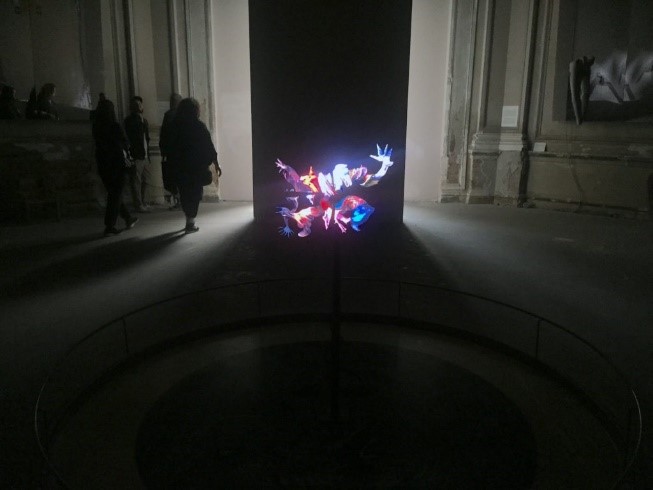
Christian Marclay’s impressive new 48 War Movies layers movies featuring conflicts from the American civil war to Iraq, on top of one other with just the outer edge of each visible, and all the soundtracks playing simultaneously, on shrieking infinite repeat, chaotic and endless, as war itself.
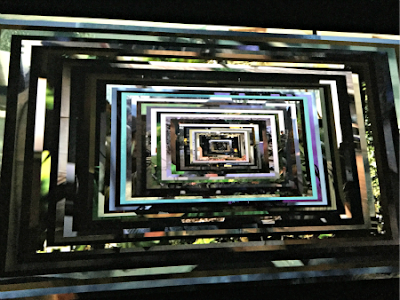
Michael Armitage’s most recent paintings, executed in the period leading up to Kenya’s 2017 elections, depict carnivalesque scenes in a cacophony of disrupted surfaces and tropical palettes that hover between vitality and threat. They re-appropriate western Modernism’s exotic tropes to express 21st-century black experience with emboldened success.
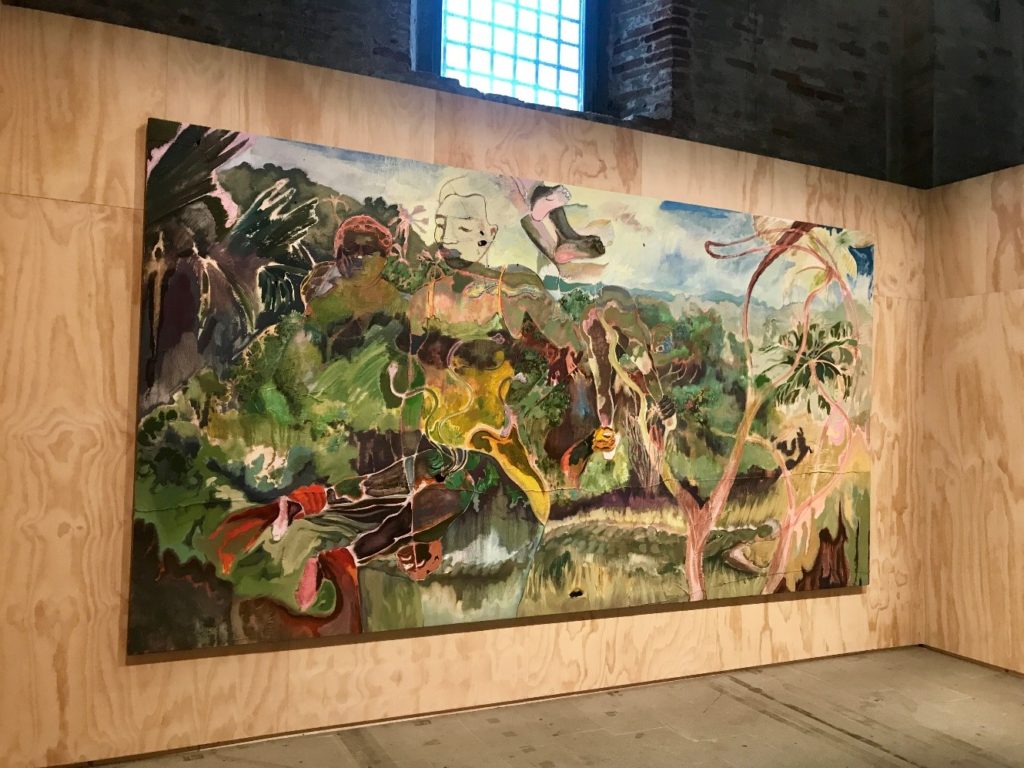
South African photographer Zanele Muholi’s self-portraits in various breath-taking costumes made by the artist, beautifully punctuate both the Arsenale and Giardini exhibitions.
Amongst the group of Njideka Akunyili Crosby works on show, the series of new portraits of herself and her family emerge as the most exceptional.
Henry Taylor’s submissions include scenes of life in modern America: a white business executive being hauled off in handcuffs, a group of black women watching the funeral of a victim of the bombing of the 16th Baptist Church in Birmingham, Alabama, in 1963.
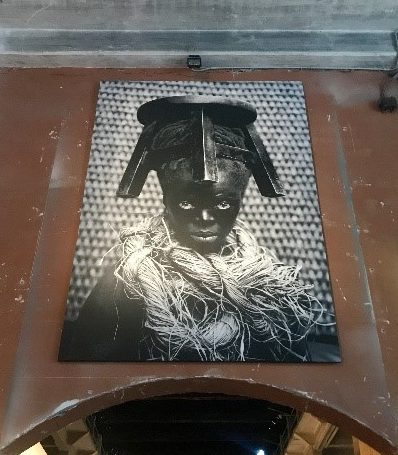
Whilst the exhibition rightly gives overdue space to once side-lined kinds of identities within the Euro-American art industry; on the other hand, it is freighted with the market forces and trends that are propelling these artists forward. Other commercial inclusions such as Carol Bove’s striking abstract sculptures and George Condo’s largescale ‘psychological cubist’ paintings, currently staples at all international art fairs, prove that the Biennale is still very much in tangent with the art market. Despite this, the exhibition forcefully declares art’s engagement with present realities and its ability to push forward from traditional forms.
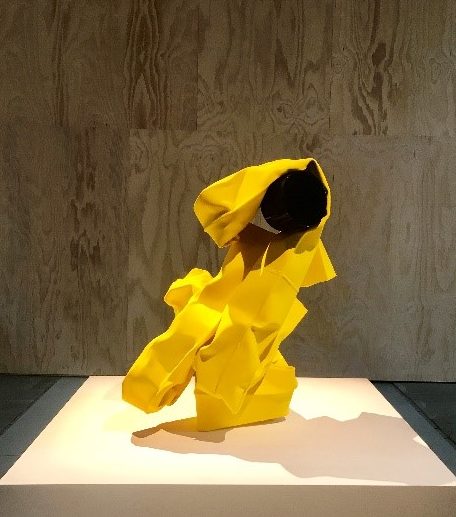
What ultimately emerges from Rugoff’s “interesting times” is a shipwreck of political and cultural stabilities – migrant tragedies, proliferation of repressive regimes, new inequalities- although the best share determined optimism and resistance. The most successful works express a sense of energy, the feeling that art in our globalised, digitally emancipated times has gained a momentum that will power it forward whatever the fates of individuals or nations.
$2 billion worth of art was sold during the New York May 2019 sales across 10 sales of Impressionist, Modern, and Contemporary art at Christie’s, Sotheby’s and Phillips, which is up $100 million from last year’s May 2018 sales totals, showing signs of a healthy and strong market.
IMPRESSIONIST & MODERN ART SALES
Both sales turned in “very solid results,” says Guy Jennings, an Impressionist and Modern specialist with The Fine Art Group…there’s “a lot of money chasing this kind of material,” Jennings says. “It’s a good market.”
CHRISTIE’S IMPRESSIONIST & MODERN ART EVENING SALE
Christie’s Impressionist & Modern Art Evening sale totalled $343.4m ($399m with premium) which sat comfortably within the presale estimate of $287.5m – $401.8m. Of the 63 lots offered, 54, or 86 percent, were sold.
The top lot of the sale was a still life by Cézanne, Bouilloire et fruits (1888–90) from the collection of Si Newhouse. Estimated in the region of $40m with feverish bidding, the work was eventually won by Rebecca Wei, president of Christie’s Asia, selling for $52m (hammer), having been purchased by the owner in 1999 for $29.4m.
Five blue-chip pieces from the Newhouse estate accounted for $100.1m, more than a quarter of the sale total. Another of the star lots from this selection included Van Gogh’s Arbres dans le jardin de l’asile, painted in Saint Rémy in 1889, which was estimated in the region of $25m. With at least five bidders on the work, it eventually sold for $33m (hammer). It was announced before the sale that both the Cézanne and the Van Gogh had new third-party guarantees in place.
New auction records were set for works by Balthus and Pierre Bonnard. The former selling for $19m (hammer) which more than doubled the previous record of $9.9m set at Christie’s New York in November 2015. Pierre Bonnard’s La Terrasse ou Une terrasse à Grasse (1912), from the Drue Heinz collection, solicited significant demand with bidding opening at $3.8m before hammering down at $16m. The previous auction record for a Bonnard was $11.6m at Christie’s London in February 2011.
SOTHEBY’S IMPRESSIONIST & MODERN ART EVENING SALE
Sotheby’s Impressionist & Modern Art Evening Sale totalled $301.6m ($349.9m with premium) against a pre-sale estimate of $252.6m – 353.2m. Fifty-one of the 56 works consigned to the sale found buyers, securing an impressive 91 percent sell-through rate. Despite some striking individual results nearly half the lots in the auction hammered beneath their low estimates highlighting some volatility in the Impressionist & Modern market.
Amongst the bought in lots was La Juenesse de Bacchus by French Academic painter William Bouguereau, an unusual inclusion in an Impressionist & Modern evening sale, and accordingly failed to find a buyer against its estimate of $25 – 35m.
The top lot of the evening, and the week, was Monet’s Meules (1890) selling for 44 times its 1986 price at $107.6m (hammer), the most expensive Impressionist work to ever sell at auction. Another key lot was Pablo Picasso’s 1962 canvas Femme au chien, offered by a Japanese collector and held for the last 29 years, the painting sold for $48m (hammer) against an estimate of $25 – 30m, with no guarantee.
Whilst Sotheby’s sale total was lower than Christie’s, the sale did outperform last year’s May sales total of $299.5m ($318m with premium). Significantly less lots were offered with guarantees indicating confidence in the market, however this shift attests to the varying prices with several lots selling beneath their low estimates.
POST-WAR & CONTEMPORARY ART SALES
CHRISTIE’S POST-WAR & CONTEMPORARY ART EVENING SALE
Christie’s Post-War & Contemporary Art Evening Sale totalled $468m ($538.9m with premium) against a presale estimate of $422.3 – 605.2m. Of the 56 total lots offered, 51 of them, or 91 percent, sold. The private collection of Robert and Beatrice Mayer achieved $157m, while works belonging to the late publishing magnate S.I. Newhouse accounted for $115m of the sale total, indicating the continued importance of estates in propelling strong sales totals.
The breakaway lot was Robert Rauschenberg‘s seminal silkscreen painting Buffalo II (1964), which after heated bidding sold to Sara Friedlander’s client for $78m hammer ($88.5m with premium) against an estimate of $50m, momentously surpassing the artist’s previous auction record of $18m. Other trophy lots included Jeff Koons’ stainless steel Rabbit (1986), estimated at $50-70m. Chased by 6 bidders, the work eventually sold to dealer Robert Mnuchin for $80m ($91m with premium) which exceeded the former Koons record of $58.4m and returned him to his post as the most expensive living artist, which he briefly lost to Hockney last year. Reportedly the end buyer was mega collector Steve Cohen.
“I think there was always going to be one which didn’t garner the same level of interest, and the Warhol just couldn’t hold up to the Rauschenberg and Koons,” Long says.
-Morgan Long, Senior Director: Barron’s Newspaper
The Warhol market proved soft with Double Elvis, whose $48m hammer price was below the estimate of $50 – 70m, with scant bidding, likely selling to the guarantor. Similarly, Early Colored Liz (1962) sold to Gagosian for $16.8m hammer against an estimate of $20 – 30m, demonstrating lack of demand at the top end of the market. Meanwhile Louise Bourgeois‘s Spider (conceived in 1996, cast in 1997), estimated at $25 – 35m, sold to Xin Li for an auction record price of $28m ($32m with premium). Other records included Larry Rivers ($1.2m), Frank Stella ($28m), Daniel Buren ($2.1m), and Jonas Wood ($4.9m).
PHILLIPS 20TH CENTURY & CONTEMPORARY ART EVENING SALE
Phillips 20th Century & Contemporary Art Evening Sale totalled $85.3m ($99.9m with premium) against a presale estimate of $75.9 – 107.8m, with only one of the 43 lots failing to sell.
The top lot of the evening was Willem de Kooning’s, Untitled XVI (1976), which hammered at $8.8m ($10.3m with premium), towards the low end of the estimate. However, it was the younger contemporary artists whose work really soared throughout the evening. Examples include Dana Schutz’s painting Signing which sold for nearly quadruple its low estimate at $980,000. Swiss artist Nicolas Party’s landscape sold for $608,000 against an estimate of $100,000 – $150,000 and Jordan Casteel’s Self Portrait sold for $237,500 from an estimate of just $60,000 – 80,000.
From the 15 works offered from the Fiterman collection, one of the most valuable consignments Phillips has secured in its history, three sold above estimate but overall the group performed solidly within expectations. The collection’s top lot was Horse and Rider (1976) by Roy Lichtenstein, selling for just below the $6m low estimate with fees.
Over half the works in the sale were guaranteed, including Helter Skelter II (2007) by Mark Bradford which sold to the guarantor for $7.7m (hammer). The abstract collage is the companion piece to Helter Skelter I, which John McEnroe sold at Phillips last year for $12m, bought by The Broad collection it currently stands as the record for the artist.
SOTHEBY’S POST-WAR & CONTEMPORARY ART EVENING SALE
Sotheby’s Post-War & Contemporary Art Evening Sale totalled $291.6m ($342m with premium) against a presale estimate of $244.6 – 351.4m. 56 of the 63 lots sold, with an 89 percent sell through rate.
With 79 percent of lots selling for above or within their estimates, the auction included records for seven artists, ranging from established artists Carl Andre, Lee Krasner, and Kenneth Noland to contemporary figures including Charles Gaines, Barkley L. Hendricks, Rashid Johnson, and Dana Schutz. The Schutz notably soared through its estimate of $300,000 – 400,000 hammering at $2m ($2.4m with premium). This record was swiftly increased from $980,000 when Phillips sold her Signing (2009) just 90 minutes earlier.
Francis Bacon’s Study for a Head (1952) was the sale’s top lot. From the collection of Richard E. Lang and Jane Lang Davis, the work sold for well above its $30m high estimate to make $44m ($50.4m with premium) to dealer Chris Ekyn who was bidding from the floor. Less dramatic was the sale of SFMOMA’s Rothko which sold neatly within its estimate for $43.8m ($50.1m with premium) to a client of Amy Cappellazzo.
SUMMARY
The highest price paid for a single artwork across all collecting categories in New York this sales cycle, was the $110.7m (incl. premium) Monet Meules painting sold by Sotheby’s, however overall Christie’s sales totals trumped Sotheby’s & Phillips across both categories.
The Impressionist & Modern Sales were down from the May 2018 sales however this was due to the Rockefeller single owner sale. Compared to November 2018 totals were up 24.3% with strong demand for top lots with estimates over $10m. Sales values in the Post-War & Contemporary category were up 7.6% from May 2018 sales.
Despite multi-million dollar records being set at the top end for Jeff Koons and Robert Rauschenberg, younger generation artists saw the most significant price jumps. Amongst the lots that received the most competitive bidding were works by Dana Schutz, KAWS, Nicholas Party, Jonas Wood, Rashid Johnson, Lynette Yiadom-Boakye and Jordan Casteel. In total these artists raised $22.9 million against a pre-sale mid-estimate of $11.6 million (based on 14 lots). The next several sale cycles will attest to the sustainability of this market attention and speculation and these artists will be closely watched.
PRESALE ESTIMATES & SALES RESULTS
